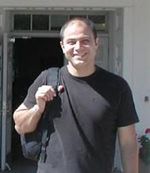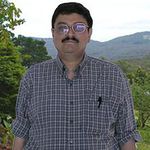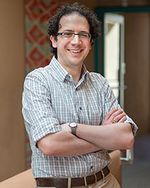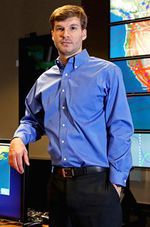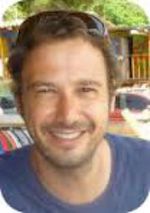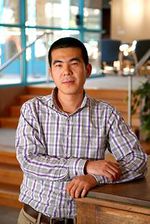Research Experiences for Undergraduates 2015-Potential Mentors: Difference between revisions
From Santa Fe Institute Events Wiki
No edit summary |
No edit summary |
||
| Line 23: | Line 23: | ||
==[http://www.santafe.edu/about/people/profile/Stephanie%20Forrest Stephanie Forrest], Santa Fe Institute, External Professor == | ==[http://www.santafe.edu/about/people/profile/Stephanie%20Forrest Stephanie Forrest], Santa Fe Institute, External Professor == | ||
<br> | <br> | ||
1. Understanding and evolving software diversity: | |||
<br> | |||
Neutral landscapes and mutational robustness are believed to be | |||
important enablers of evolvability in biology. We apply these concepts | |||
to software, defining mutational robustness to be the fraction of random | |||
mutations to program code that leave a program’s behavior unchanged. | |||
Test cases are used to measure program behavior and mutation operators | |||
are taken from earlier work on genetic programming. Although software is | |||
often viewed as brittle, with small changes leading to catastrophic | |||
changes in behavior, our results show surprising robustness in the face | |||
of random software mutations. Depending on the student's interest, the | |||
REU project could either involve learning to use the GenProg software | |||
and running new experiments, or it could involve developing theoretical | |||
models based on earlier work in the biological literature. | |||
<br> | |||
2. Understanding and modeling large-scale cybersecurity threats | |||
<br> | |||
Cyber security research has traditionally focused on technical solutions | |||
to specific threats such as how to protect desktops and mobile devices | |||
against the latest malware. This approach has greatly enhanced our | |||
ability to defend against specific attacks, but technical improvements | |||
will not be sufficient on their own. Today’s cyber issues involve | |||
social, economic, organizational, and political components, which are | |||
often pursued in isolation from technical reality. Forrest and Prof. | |||
Robert Axelrod (Univ. of Michigan) are collaborating on project that | |||
aims to address that gap by focusing on the problem of reducing risks | |||
arising from cyber conflicts, especially those among state actors. Our | |||
current plan is to focus on the attribution problem, that is, once a | |||
cyberattack has been discovered, what does it take to hold a particular | |||
actor responsible? Depending on the student's interest and background, | |||
this project could entail statistical modeling, developing | |||
game-theoretic or decision-theoretic models (e.g., when is it | |||
advantageous to plant false flags), to researching the current (public) | |||
state of the art for attributing cyberattacks. | |||
<br> | |||
3. Forrest and Moses are collaborating on a project to examine how ant | |||
colonies and immune systems form distributed information exchange | |||
networks to search, adapt and respond to their environments. The is | |||
characterizing search strategies quantitatively in terms of how | |||
information flows over networks of communicating components, in this | |||
case, ants or immune cells. It will measure how information improves | |||
performance, measured in terms of how quickly a colony finds seeds or | |||
the immune system neutralizes pathogens. By studying in detail how | |||
distributed interaction networks guide search in two distinct systems, | |||
this project aspires to formulate a general theory describing how | |||
decentralized biological networks are organized to search, respond and | |||
adapt to different environments, and how they effectively scale up to | |||
large sizes. As the research has progressed we have begun to test our | |||
theoretical understanding of distributed search strategies by | |||
implementing them as search algorithms in robotic swarms. This | |||
demonstrates practical applications as well as providing a controlled | |||
experimental system in which to test theoretical predictions. | |||
<br> | |||
[[Image:mirta.jpg|150px|{border}]]<br> | [[Image:mirta.jpg|150px|{border}]]<br> | ||
==[http://www.santafe.edu/about/people/profile/Mirta%20Galesic Mirta Galesic], Santa Fe Institute, Professor == | ==[http://www.santafe.edu/about/people/profile/Mirta%20Galesic Mirta Galesic], Santa Fe Institute, Professor == | ||
Revision as of 15:54, 11 March 2015
| Research Experiences for Undergraduates 2015 |
A complete list of resident faculty list and our postdoctoral fellows can be found here
Potential Mentors and Projects
Cristopher Moore, SFI REU PI, Santa Fe Institute, Resident Faculty
Nihat Ay, Santa Fe Institute, Resident Faculty
Andrew Berdahl, Santa Fe Institute, Omidyar Fellow
Tanmoy Bhattacharya, Santa Fe Institute, Resident Faculty
Vanessa Ferdinand, Santa Fe Institute, Omidyar Fellow
Stephanie Forrest, Santa Fe Institute, External Professor
1. Understanding and evolving software diversity:
Neutral landscapes and mutational robustness are believed to be
important enablers of evolvability in biology. We apply these concepts
to software, defining mutational robustness to be the fraction of random
mutations to program code that leave a program’s behavior unchanged.
Test cases are used to measure program behavior and mutation operators
are taken from earlier work on genetic programming. Although software is
often viewed as brittle, with small changes leading to catastrophic
changes in behavior, our results show surprising robustness in the face
of random software mutations. Depending on the student's interest, the
REU project could either involve learning to use the GenProg software
and running new experiments, or it could involve developing theoretical
models based on earlier work in the biological literature.
2. Understanding and modeling large-scale cybersecurity threats
Cyber security research has traditionally focused on technical solutions
to specific threats such as how to protect desktops and mobile devices
against the latest malware. This approach has greatly enhanced our
ability to defend against specific attacks, but technical improvements
will not be sufficient on their own. Today’s cyber issues involve
social, economic, organizational, and political components, which are
often pursued in isolation from technical reality. Forrest and Prof.
Robert Axelrod (Univ. of Michigan) are collaborating on project that
aims to address that gap by focusing on the problem of reducing risks
arising from cyber conflicts, especially those among state actors. Our
current plan is to focus on the attribution problem, that is, once a
cyberattack has been discovered, what does it take to hold a particular
actor responsible? Depending on the student's interest and background,
this project could entail statistical modeling, developing
game-theoretic or decision-theoretic models (e.g., when is it
advantageous to plant false flags), to researching the current (public)
state of the art for attributing cyberattacks.
3. Forrest and Moses are collaborating on a project to examine how ant
colonies and immune systems form distributed information exchange
networks to search, adapt and respond to their environments. The is
characterizing search strategies quantitatively in terms of how
information flows over networks of communicating components, in this
case, ants or immune cells. It will measure how information improves
performance, measured in terms of how quickly a colony finds seeds or
the immune system neutralizes pathogens. By studying in detail how
distributed interaction networks guide search in two distinct systems,
this project aspires to formulate a general theory describing how
decentralized biological networks are organized to search, respond and
adapt to different environments, and how they effectively scale up to
large sizes. As the research has progressed we have begun to test our
theoretical understanding of distributed search strategies by
implementing them as search algorithms in robotic swarms. This
demonstrates practical applications as well as providing a controlled
experimental system in which to test theoretical predictions.
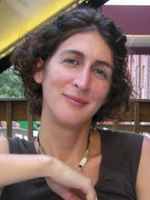
Mirta Galesic, Santa Fe Institute, Professor
Josh Grochow, Santa Fe Institute, Omidyar Fellow
Laurent Hebert-Dufresne, Santa Fe Institute, Postdoctoral Fellow
Alfred Hubler, Santa Fe Institute, External Professor
Eric Libby, Santa Fe Institute, Omidyar Fellow
John Miller, Santa Fe Institute, External Professor
John Pepper, Santa Fe Institute, External Professor
Project Proposal:
This project is to refine and implement a new evolutionary heuristic algorithm for a classic NP-hard spatial optimization problem called the “Traveling Salesman Problem”
The implementation could be done in any object-oriented programming platform with good spatial graphics, so we could decide that part together if you’re interested.
-Faculty mentor: Dr. John W Pepper, external faculty
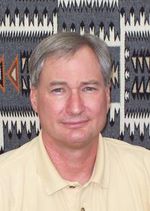
John Rundle, Santa Fe Institute, External Professor
Sam Scarpino, Santa Fe Institute, Omidyar Fellow
Markus Schlapfer, Santa Fe Institute, Postdoctoral Fellow
Caitlin Stern, Santa Fe Institute, Omidyar Fellow
Pan Zhang, Santa Fe Institute, Postdoctoral Fellow


